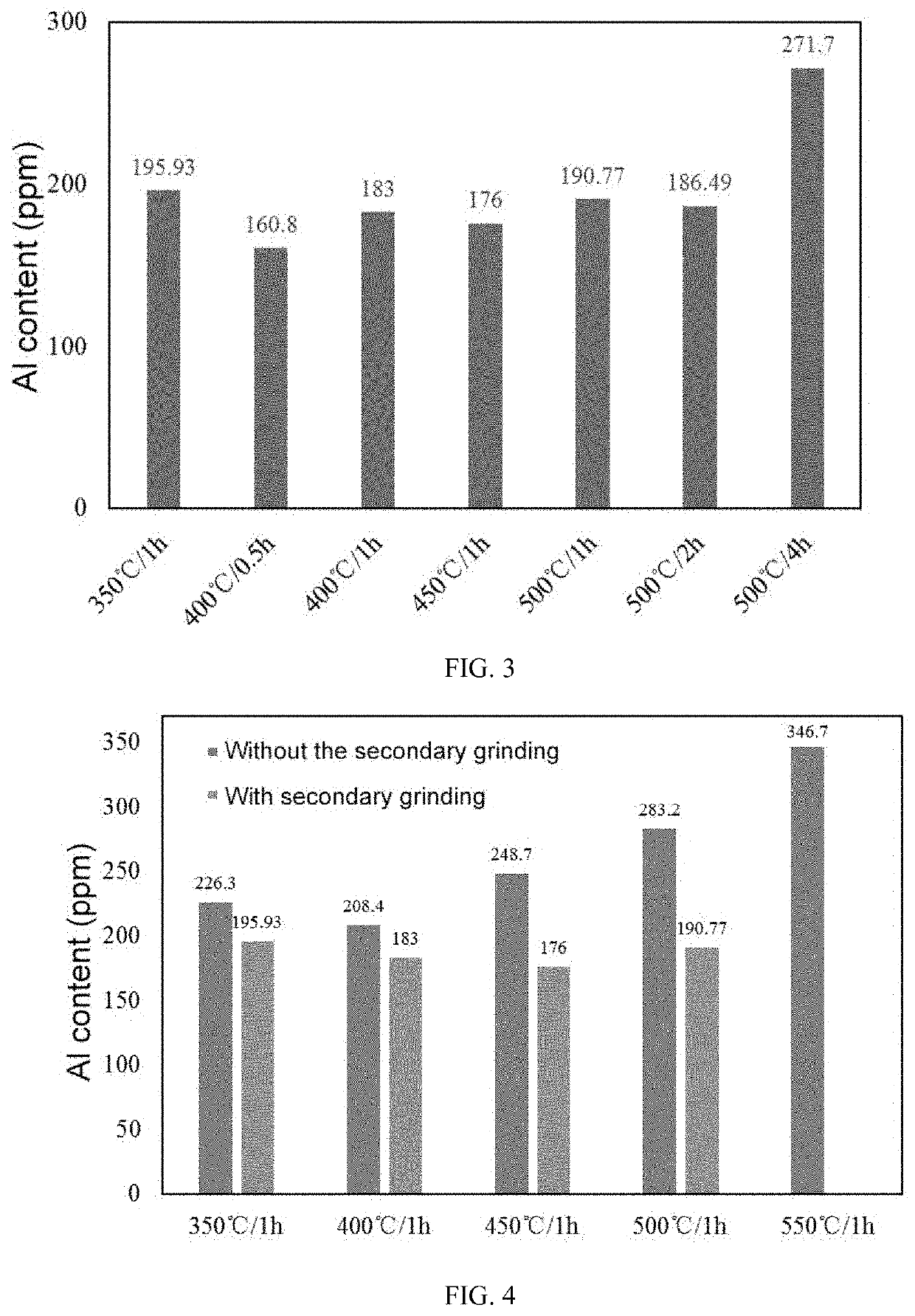Method for recycling positive plate of lithium-ion battery
- Summary
- Abstract
- Description
- Claims
- Application Information
AI Technical Summary
Benefits of technology
Problems solved by technology
Method used
Image
Examples
example 1
[0052]Provided herein was a method for recycling a lithium iron phosphate positive plate with low energy consumption and low Al content, which was specifically described as follows.
[0053](S1) A lithium iron phosphate positive plate to be recycled was crushed into a granular material with a particle size of about 5-10 mm by using a grinder.
[0054](S2) The granular material was heated to 450° C. under N2 atmosphere in a roller furnace, kept at 450° C. for 1 h and cooled to 95° C. to obtain a calcined material, where the temperature-rising process lasted for 2 h.
[0055](S3) The calcined material was ground to obtain a ground product with D50 more than or equal to 50 μm by using a grinder.
[0056](S4) The ground product was classified by using an air classifier to remove the Al simple substance to obtain a desired lithium iron phosphate positive material, which was detected by inductively coupled plasma (ICP) to have an Al content of 176 ppm.
[0057]Referring to FIGS. 2A-2B, it can be seen th...
PUM
 Login to View More
Login to View More Abstract
Description
Claims
Application Information
 Login to View More
Login to View More - R&D
- Intellectual Property
- Life Sciences
- Materials
- Tech Scout
- Unparalleled Data Quality
- Higher Quality Content
- 60% Fewer Hallucinations
Browse by: Latest US Patents, China's latest patents, Technical Efficacy Thesaurus, Application Domain, Technology Topic, Popular Technical Reports.
© 2025 PatSnap. All rights reserved.Legal|Privacy policy|Modern Slavery Act Transparency Statement|Sitemap|About US| Contact US: help@patsnap.com



